[ad_1]
The cost of living in Panama may not be the cheapest in Latin America, but when you consider all the positive factors that lure lots of expats there each year, it comes out high on the value scale.
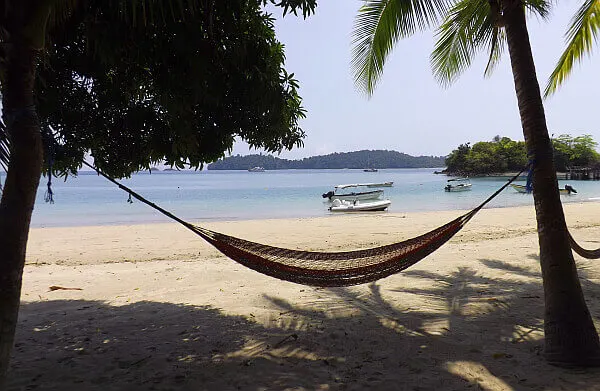
You’ve got good air connections, a dollar economy with low inflation, easy paths to residency, good retirement incentives, and year-round beaches to enjoy. There’s terrific health care at attractive prices, cheap booze, and low tariffs on imports. If you don’t like the heat, you can just go up to a higher altitude to find a more temperate climate. They use the U.S. dollar, so there are no worries about exchange rate swings and inflation is seldom higher than the world average.
Kris and Joel Cunningham were living in Sarasota, Florida, the kind of place many northern Americans dream of retiring to. They had no idea how they were going to make it on their earnings, however, when retired. They were paying $1,200 per month on their mortgage and taxes. Selling it and renting wouldn’t help much. “The house next to us, similar to what we have now in Panama, was renting for $1,500 per month,” she adds. They’re not paying anything close to that though: their rent in the city of David is $385 instead. With lower utility bills, food bills, and medical costs, they are very happy with their new life and feel much more confident about their finances.
Panama perpetually comes out on top as the world’s best retirement haven in publications that write about this subject every month. Most of those publications have editors who live there or business interests where they have a stake, so take that with some skepticism. No matter how you look at it though, it’s a winner in almost every category except costs—and those go down drastically if you don’t settle down in the capital city. Its pensionada program for retirees is superb and the threshold to earn those perks is low from a proven income standpoint.
Panama is incredibly welcoming to foreigners. It doesn’t tax money earned outside the country and a lot of items have some of the lowest taxes in the world. This country also has one of the best banking systems in the world, a stable political situation, and a good business climate. While the U.S. and Europe were reeling last decade in the financial crisis, Panama was still in growth mode.
American Jim White worked in IT for many years, rising up the ranks in management. About four years after his daughter was born he discovered the retire early movement. He and his wife Lisa eventually realized they could speed up that process if they moved somewhere cheaper. They eventually went on “an exploratory recon mission” to Panama in 2017 and hit a few different locations that sounded interesting. They ended up in Boquete, where they loved the climate, the driving distance to the beach, and the expat community.
Two years later, after putting some more money away, they sold everything and headed south. Now they live in style on around $3,500 per month for the three of them including expat health insurance and a small storage unit back home. (See more on his expat life at RouteToRetire.com.)
The health care system in Panama is excellent, to the point where it is a medical services destination for many foreigners who don’t live here. Many fly in to get surgery, have major dental work done, or spend time in a hospital for one-quarter the price they’d have to pay otherwise.
You’ll make fewer sacrifices here than you will pretty much anywhere in Latin America if you want what you had at home. There’s fast internet, good prices on electronics, reliable electricity, a competitive cell phone climate, and a lot of the shops and services you’re used to. Of course you also get some of the same side effects of all that: consumerism, strip malls, and a culture that revolves around the automobile. At NTL Trust you can get personalized advice and guidance on Panama’s citizenship-by-investment program, along with other residency options.
You’re never too far from a beach here though when you want to go unwind. Here you could swim in the Caribbean in the morning, hop in a car, and swim in the Pacific by lunchtime. This is also a paradise for bird watching, nature exploration, and adventure: Costa Rica without the crowds and at rates that are not such a splurge.
Best Places to Live in Panama
Panama has a relatively wide array of places to choose from to live in, each with a different personality. The specific spot can impact the cost of living in Panama a great bit.
You may have to take Panama City out of the mix if you’re on a strict budget, though it can be easier if you’re a dual-earner couple or you’re a single willing to share a large apartment with others. Rosie Bell is a British freelance writer who has covered Panama a lot for major publications. “Overall, I rarely spend more than $1,200 a month on my living expenses, even though I live in the capital. My rent is a quarter of what it would be back home and every condo I’ve lived in has a communal gym and swimming pool included.”
There are multiple places with Americans living in Panama and a sizable population of retirees and expats from other countries as well. Here are the main ones, but there are plenty of other beach and mountain towns to check out if you don’t need to communicate in English only.
Panama City – The closest thing you’ll get to Miami after heading south (good and bad). No need for your own car here and there’s even a metro now.
Coronado – A beach resort community town an hour south of the capital. One of the original expat communities in Panama.
Valle de Anton – Just 120 kilometers from the capital, this highland interior area has cool evenings, hot springs for soaking, and relaxed living. A safe and upscale option.
David – The second-largest city, but a bit higher in altitude and not as congested as the capital.
Boquete – A popular highland area of flowers, coffee, adventure activities, and cool air. The top choice for those who want to retire in Panama.
Bocas del Toro – A string of islands popular with tropical paradise seekers, rebels, and outcasts. You won’t need a car, but you’ll probably need a boat.

Housing Costs for Expats
Your biggest expense will usually be housing no matter where you live. If you pull up apartment prices online in Panama City, you may do a double-take. They seem to have no relationship whatsoever with the average salary for locals.
Most of these $5,000 a month penthouses in high-rise buildings on the water are not aimed at you though. Their target market is people like corporate VPs working for international companies, or escaping Venezuelans, Brazilians, and Argentines making banking deposit trips. For many “nomad capitalists” who roam the globe looking for business opportunities and tax-advantaged investments, Panama is seen as nirvana. It has low taxes, limited regulations, a strong banking system, and limited bureaucracy (as long as you hire some legal help). So there are a lot of takers for expensive condos, whether renting or buying.
That’s just one side of the city, however. After all, $1,000 to $1,250 a month for a local is a good white-collar salary, so they’re certainly not paying $2,000 per month for an apartment. They are living in less ritzy neighborhoods outside the central business district, with more than two people in a big apartment or house with multiple bedrooms. If you live on the outskirts of the capital it’s not difficult to find a nice apartment for less than $600. Crowdsourced site Numbeo.com says rent prices in Panama are half what they are in Miami.
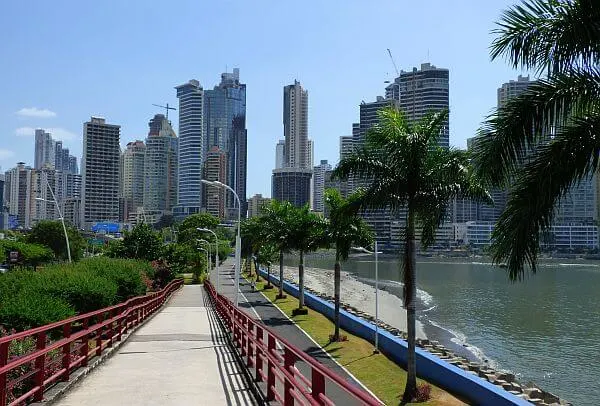
Rosie Bell took her time and got the word out each time she was looking, however, ending up with good deals. If you just search the listings geared to expats, it’s hard to find a nice place to rent in a good part of the city for under $1,000 per month. Check Craigslist or start surfing the web in Spanish to see more realistic options.
Once you get beyond the capital and the prime beach developments, prices drop drastically. Kris and Joel Cunningham pay $385 per month for a house in a nice middle-class neighborhood on the edge of David, Panama and they love it. “We have woods and a river behind us, plus there’s only one way into the neighborhood so it feels really safe. We’re surrounded by local professionals who are just lovely people.”
A cursory look online at housing rental prices around Panama turned up plenty of affordable places. I found a few one-bedroom places and large furnished studios in Boquete for $450 or less per month including utilities and a large two-bedroom furnished townhouse in the same city with a gourmet kitchen for $900. A three-bedroom furnished apartment in Volcan was going for $650.
A two-bedroom beach house in Puerto Armuellas (near Costa Rica) was listed for $450 while an American-style house in a gated community with a pool in Cocle, about 15 minutes from the coast, was listed for $650 per month furnished. I found a 3BR house of 2,100 square feet going for $300 in David. I also found a variety of apartments in prime areas of Panama City for $1,000 or less per month.
Former Texan Richard Kongable lived in a few places in Panama before settling in a rural area near Volcan, on the side of a mountain. “I like that I never need heat, I never need air conditioning, and there’s always a gentle breeze. I’m on the edge of a valley, with a volcano on the left and two rivers. I can see islands in the ocean even though it’s an hour and 20 minutes away.”
Richard rented his house for years for $300 a month and thought he was going to have to leave eventually when the American owner put it up for sale. Instead, the owner fell into health problems and needed to sell in a hurry, so with no buyers in sight, Richard got the 1,600 square foot house for half price: $25,000.
Prices in prime areas keep creeping up though as Panama’s economy continues to grow at a rapid pace. “A lot of what you read in International Living and publications like that is out of date on prices,” says Richard, “or they’re only showing you the outlier situations to get you hooked on coming to a conference. In most cases, you’re only going to find a terrific deal by being here a while and looking around. In places like Boquete there are a lot of unadvertised rentals from expatriates who are returning home or moving and don’t want to leave their house empty. You’re only going to find out about these by word of mouth.”
When Jim White moved to Boquete from Ohio, his family first secured a short-term rental in a nice complex for a month to stay in while they looked around. They thought they would end up in a house, but they couldn’t find one they liked. Eventually they found a fully furnished three-bedroom, two-bath apartment in a gated community for $1,100 a month. Water and internet are included, plus the complex has a great gym, a racquetball court, and two swimming pools. They pay $80 for a propane tank that lasts for months, around $80 per month for electricity.
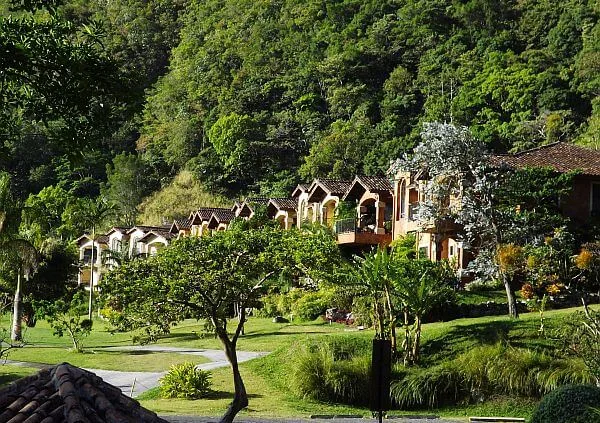
“We have beautiful grounds, the mountains beside us, and some other expats to talk to in English,” he says. They’re close enough to town to walk, so they don’t need a car. “We’re paying on the high end for here though,” he says. “The average cost of an apartment in Boquete is probably more like $700 to $900 for a nice-sized place.”
If you are looking to buy in Boquete, prices are creeping up again after hitting a wall and dropping during the housing crisis in the U.S. a decade ago. You can build a piece of land you buy from $40 to $100 per square foot depending on how fancy you get. When purchasing a condo or house, most fall in the $80 to $200 per square foot range in and near town.
Chuck Holton eventually settled in Valle de Anton at 2,500 feet in altitude with his wife and two kids. He was in the military, then worked as a stockbroker for 10 years and realized that all his older wealthy clients had one regret: they didn’t spend enough time with their kids. So he started looking for ways to restructure his life. He became a writer working at home, a book author, and since 2004, a war correspondent and videographer. He realized he could be based anywhere with good air connections and reduce his tax bill significantly by moving abroad, so the family of seven moved to Panama. “I save more in taxes compared to what my U.S. bill was than what we spend here, total,” he says.
“We had spent a year in Panama before when I was researching a book, but we wanted to be somewhere a little cooler, where we didn’t need air conditioning all the time. Valle de Anton is a walking town and culturally it’s like going back to the 1950s—kind of safe and boring. No crime to speak of and the kids can ride their bikes all over with no worries.”
They rented for a year to be sure they had a good feel for the market. They then bought a fixer-upper from the local market and renovated it to American standards. They sold that and bought another house right in the center that was move-in ready. Chuck calls their area “the Aspen of Panama,” a place where the elite have their summer homes. So their house of more than 5,000 square feet was $330,000. “You could buy a place a half-hour away for a third of that,” he explains, “but we’re in a prime area with high resale values. There’s not much here below $300,000 unless you’re willing to do some upgrades.”
One big advantage of Panama is that this is one of the few Latin American countries with a banking system that will extend mortgages to foreigners. It takes some patience, but you can finance a home with as little as 20 percent down and interest rates are not as high as in most of the region. Also, many developers have set up the financing for new projects and they will have an interest in guiding you through the process.
Great Panama Healthcare and Hospitals
Expatriates in Panama rave about the health care they receive. From the time they book an appointment (or get a same-day house call) to the invoice they receive after a hospital stay, it’s all a pleasant surprise, especially for Americans. You get the good parts of the American system—well-trained doctors who speak English, the latest equipment, and gleaming clean hospitals—but without the for-profit incentives and layers of insurance executive riches that come with all that up north. If you have any health issues, this aspect is a big reason the cost of living in Panama will seem like a great bargain.
The four largest hospitals in the capital are all affiliated with major U.S. ones, including the Punta Pacifica one with John Hopkins. By most measures, it’s the best hospital in Latin America. “But at 1/10 the cost for a lot of procedures,” says Chuck Holton. “As one example, I got a gall bladder treatment in the USA that was basically a sonogram and some pain meds and counting the emergency room visit fee, it was something like $2,500. My wife had the exact same treatment here later at the best hospital in the country, same sonogram and pain meds, and it was $139. Plus she got much better service, with more personal attention.”
To give you an idea of what medical prices are like in general, here are some typical ones:
General doctor visit – $20 to $40 (not a co-pay, the whole cost)
Specialist visit – $30 to $60
Doctor house call – $50
Dental cleaning – $35 to $45
Tooth filling – $50
Porcelain crown – $350
Hip replacement surgery – $12,500 total
You will get far better care than you’re used to with all this as well. The doctor or dentist won’t be in a rush to move on to the next patient. There will be more nurses around. You won’t have to worry they’re going to charge you $5 for one Q-tip or an Advil. People will actually take the time to explain what’s going on and make sure you understand.
When Jim, his wife, and daughter went to the best dentist in Boquete the first time, the total cost for their cleanings, checkups, and his daughter’s panoramic dental x-ray was $170. The adult cleanings took around 25 minutes each—very thorough and done by the dentist herself. A follow-up appointment for his daughter to have an orthodontist look at a crooked tooth was $25.
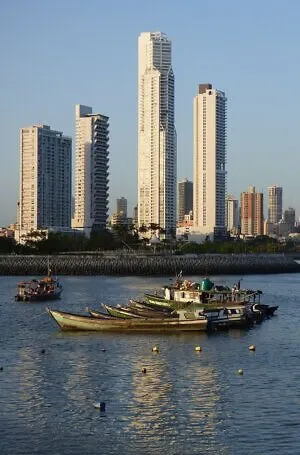 Many expats in Panama joke that the price they pay out of pocket for medicine in Panama is less than what their insurance co-pay was before. It depends a lot on the particular drug though and whether a generic version is available.
Many expats in Panama joke that the price they pay out of pocket for medicine in Panama is less than what their insurance co-pay was before. It depends a lot on the particular drug though and whether a generic version is available.
Naturally, if you’re moving from a country with a more civilized single-payer health care system, like Canada and the UK, you won’t save as much on health care. You will get far better service though, faster, and with the doctor or dentist of your choice. There’s no waiting list or mandated delay.
There is a national health care program legal residents can tap into, but it’s too low-grade for most. It entails longer waits at public clinics and few choices. Another alternative is a private insurance program, especially good to avoid catastrophic care charges, or a discount program where you pay a monthly fee to get deep discounts across the board when you need care. Those retirees in the pensionada program also receive discounts automatically of 10-20 percent by showing their ID card.
Keep in mind, however, that the major hospitals are in the two largest cities: Panama City and David. Boquete and Bocas del Toro are not too far from the latter, but if you’re on a beach in the far north, or in a hut on the San Blas Islands, you may have to travel quite far for non-routine care.
Panamanian Food & Drink Costs
You can drink the water from the tap in most of Panama, so that means you’re less likely to get sick from the food here than you are in many other developing countries. Unfortunately, the food is definitely not the reason you’re going to move here. While there are good gourmet restaurants at the high end, especially in areas with lots of expatriates, the everyday cuisine is boring and uninspired. Expect lots of fried plantains, beans, rice, and meat stews.
Even where there are a lot of restaurants, like in Boquete where there are at least 75 for a city of 35,000, the variety can seem rather limited. “For some reason, Italian food is all over the place here,” says Jim White, “but there’s only one Mexican place and not much Asian food.”
If you cook for yourself though and have more imagination, you’ll find a bounty of fresh ingredients to work with. You’re never far from fresh fish, local foods are varied, and this is a major shipping center too. The varied altitude in Panama means you can buy both tropical fruit and mountain berries, coconuts and fresh coffee. In the Chiriqui province of David and Boquete, you’ll be very close to where much of the country’s fresh food is produced. I saw people beside the road there selling ten-kilo bags of mixed fruit and vegetables for $5 and it would take you quite a while to get through them all without a big family.

Expect to pay $3-$5 for a meal of the day in a place where working-class locals eat, up to $30 for a nice non-hotel restaurant. “We might spend $45 or $50 for three at a pretty nice place in Boquete,” says Jim, “which is not bad compared to the States. You can easily spend that much at Applebee’s. But last week three of us went to a local Panamanian food place and stuffed ourselves with giant portions for $11 total.”
Kris Cunningham says she has been pleasantly surprised by low costs in Panama, particularly groceries. “Food is definitely a great deal, especially fruit and vegetables. If you spend $20 on those it will be more than you can carry. We paid two or three times more for almost everything at home, including meat and fish. If you buy what the locals buy and cook, living here is very cheap.”
If you like to drink, Panama is paradise. Domestic beer is cheap and thanks to the duty-free climate for taxes, wine and liquor prices here for what’s imported are some of the lowest in the world. You won’t have any trouble ordering what you want to drink and getting it at a good price.
This is one of the few countries in the world where alcohol isn’t taxed at a higher rate than other items. Since taxes are so low here anyway, prices in Panama’s liquor stores and supermarkets beat out the lowest duty-free prices you’ll see anywhere in the world. This is one of the few countries where I’ve seen Chilean and Argentine wine selling for less than I could buy it on sale in a low-tax USA state. Across-the-board liquor prices are the lowest I’ve seen anywhere on the planet in my travels.
“I regularly dine at glittering rooftops with obligatory sea views, which sets me back $20,” says Rosie. “A mixology masterpiece at a cocktail bar ranges between $5 and $12.” Last time I was in Panama City, I found my own rooftop spot in Casco Viejo and we sipped two mojitos for $8.
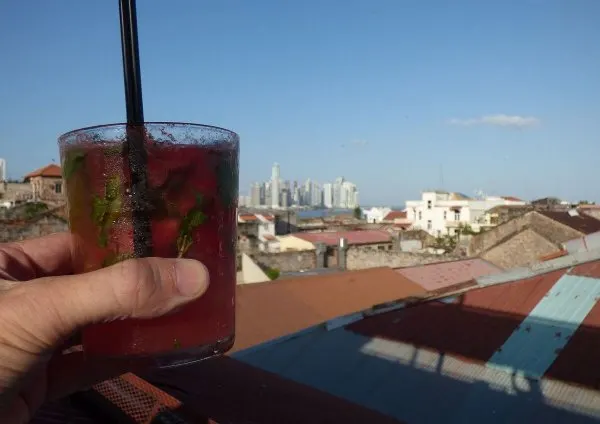
According to Numbeo.com, costs for groceries in Panama City are about 60% that of New York City and roughly half the price for restaurants. Both will be far less in other areas. You’ll find eating out to be a deal if you’re coming from two of the three countries in North America.
Panamanian Transportation
Maybe you can blame it on the USA’s long domination of the country, but this is not an easy place to get by without a car. The good news is, it has the best roads in Central America. When there are bus connections available between cities, they’re not very expensive. The two-hour trip from Panama City to El Valle is less than $5 and an express bus from the capital all the way to David is around $15. Transportation will not be one of your big cost of living expenses if you can get by on public methods.
The big Panama City infrastructure change in this new century (besides the canal expansion) was the new metro in the capital. It was finished on time in 2014, roughly within budget, and is working well. A second line opened in 2019, running 13 miles, and more lines are in the works. The fare is a very reasonable 35 cents per trip after you buy a fare card. See more on that here.
There is only one train in the country, plying the route between Panama City and Colon along the Panama Canal. It’s not of much use for residents except to hit the duty-free mall.
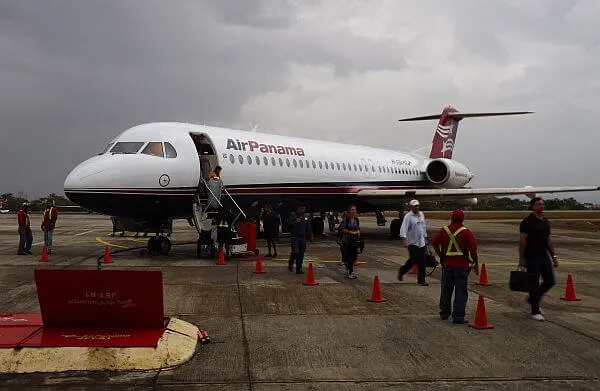
Domestic flights are relatively inexpensive, with the one from the capital to David being $120 or less. Because Copa Air is based here, you also have lots of options for getting to other countries, including in Europe and Asia.
The smoke-belching city buses are mostly phased out, replaced by more efficient ones. Taxis in the capital are supposed to run $1-$4 depending on distance in the central area, but you’ll have to ask about the fare before taking off if you don’t see a meter in use. Uber is my main form of transport,” says Rosie Bell. I usually pay around $3 for a 30-minute journey, less for short hops.” Jim pays $3 to $8 for a taxi trip in Boquete.
Rosie also loves the island getaway options from the capital city. “An overnight trip to the beautiful San Blas Archipelago may cost between $100 and $150 including food, island hopping, world-class snorkeling, and door-to-door transportation in a 4×4.” You can also get a public bus to the beach at Coronado for as little as $3.
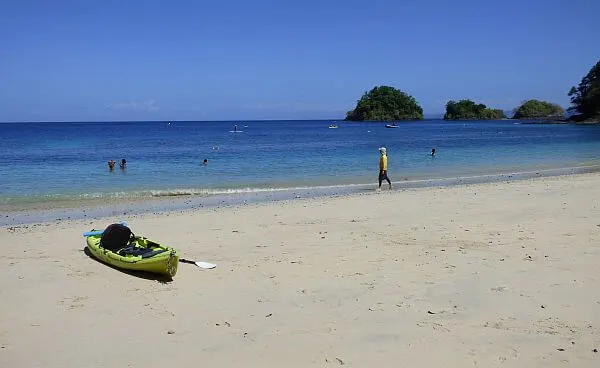
Other Costs and Perks for Living in Panama
The pensionada program for retirement age foreigners in Panama is in most respects the best in the world. Foreigners who can show an income of $1,000 per month (or buy property and show $750 a month) get the perks regardless of age. You can retire early and get what seems like “senior discounts” already and buy a car for less. You just might need to buy an annuity or deposit money in a Panamanian bank to show what looks like a pension.
“I paid back the visa processing costs the first year just from airline discounts,” says Richard. Retirees get the following lost list of (sometimes unbelievably generous) discounts:
• 50% recreation and entertainment activities, such as movies, theaters, and sports and other public productions
• 30% off inter-city buses, trains (well, the train route), and ferry boats
• 25% off flights of national and foreign Airlines
• 50% off the rack rate of hotels from Monday to Thursday, 30% on Friday, Saturday and Sunday
• 25% discount of food in licensed sit-down restaurants
• 15% off in fast food establishments
• 15% off the total cost for services of hospitals, dentists, and private clinics, plus
• 20% off doctor consultations
• 10% discount in pharmacies for prescription medicines
• 25% discount in monthly electrical consumption up to 600 kilowatts
• 25% discount in the water bill
You can also bring up to $10K of household goods into the country duty-free. The best part of all this? If the law every changes, you can keep enjoying the perks on a grandfathered basis–they’re guaranteed for life as long as you remain a legal resident.

As for monthly living expenses besides the big ones, the Cunninghams pay $46 a month for a bundled internet and cable TV package, $10-$20 a month or less on their prepaid cell phones (“Everyone seems to use WhatsApp here” she says), and around $45 a month on electricity. If they ran the air conditioning constantly that could triple, however.
Mikkel Thorup, who runs the Expat Money Podcast I’ve appeared on before, sent me his electricity bill for a 4,700-square-foot penthouse in Panama City. He gets enough breeze up there that he rarely uses air conditioning, but his electricity bill averages $45 per month.
Richard estimates that he spends about $160 a month on utilities, including a satellite TV package with lots of English channels, then spends $300 a month on a son’s private school. “All in, counting car and gas expenses, the three of us probably spend around $1,700 a month,” he says.
“Anything that is labor-intensive is far cheaper here,” says Chuck. “So household staff is a bargain, say $20 a day for a housekeeper or gardener. The great thing is if there’s anything you don’t want to do, you can just hire somebody to do it: to get the car fixed or to go stand in line for paperwork. We paid somebody to camp out all night to be first in line at the immigration office and get our residency paperwork sorted out. He charged us 15 bucks.”
Panama Visa, Immigration, and Residency
Panama is one of the easiest countries in the world to get a retirement residency visa and it’s a big reason the destination is so popular with expatriates. You only need an income of $1,000 a month to qualify, plus $250 for each dependent. Or show $750 a month coming in if you own property in Panama worth at least $100,000. Alternatively, you can meet this qualification with a letter from a Panama bank stating you earn at least $250 a month in interest from your deposits with them. If your pension/social security is low and you want an easy path to residency, it’s hard to beat Panama.
In just three months, you can convert a temporary residency visa to a permanent one, a sharp contrast to many countries where it takes years.
If for some reason this option is not a good match, you can still apply for a permanent residency visa from the get-go, with other options to qualify. Unfortunately, as of August of 2021, the previous “Friendly Nations Visa” got a major downgrade. Before, you just had to deposit $5,000 in a local bank, a low hurdle for most people. Then you could set up some kind of business or buy any property and you met the requirements.
Alas, the government pulled those options and now you either have to be working for a Panamanian company or you have to invest $200,000 in Panama real estate. It’s not hard to spend that much on real estate, especially in the capital, but that doesn’t help you much if you were planning on renting or purchasing something cheaper.
Anyone who already got approved under the old scheme is grandfathered though, so for now anyway, they can keep renewing. Chuck Holton and his family are on a Friendly Nations business visa because he started a local tour company.
If you’re interested in living in Panama, do some poking around to find the visa/permit that is right for you. There are others where you can buy your way in by investing $300,000 to become a full citizen, a business investor visa that requires an investment of $160,000 and employing locals, or an agricultural visa that requires an investment of $60,000 for a six-year residency permit.
Since it’s relatively easy to get residency here one way or another, the government doesn’t take too kindly to foreigners trying to stay permanently on a tourist visa. “They have tightened things so you can’t cross the border for the weekend and come back over and over, actually living here as a tourist,” says Kris Cunningham. “Now you really need residency to live here.”
With the relatively low cost of living in Panama, you naturally have a few downsides to the place, no matter how many gushing articles you read about it. This is still the developing world, with a lot of the same problems you’ll find elsewhere in Latin America in terms of public services, pollution, traffic, garbage, and inefficiency. You’ll still deal with frustrating bureaucracy and the local press is kept on a tight leash.
Unless you love stifling tropical heat. humidity, and insects, you may not like the majority of the country that sits near sea level. At a higher elevation, you’ve got the opposite problem. Some think Boquete in the highlands is perfect. Others think it’s too cold. Then when rainy season hits, “We never, ever leave the apartment without our umbrellas because you just never know,” says Jim. Go at the worst time of year to judge for yourself.
Overall though, living in Panama has more pluses than minuses. Its easy air connections, light taxes, good health care, good banking system, easy visa process, and dollar economy make it a no-brainer for many retirees who don’t want to deal with a tougher adjustment in a place like Guatemala or Ecuador. As always, if you’re thinking of moving to Panama, I strongly suggest doing a trial run so you can see if the place speaks to you or not.
This post on the cost of living in Panama for expats was updated in January of 2023.
Want to learn more about moving abroad to get a better life for half the price? Get on my Cheap Living Abroad monthly newsletter list.
[ad_2]






